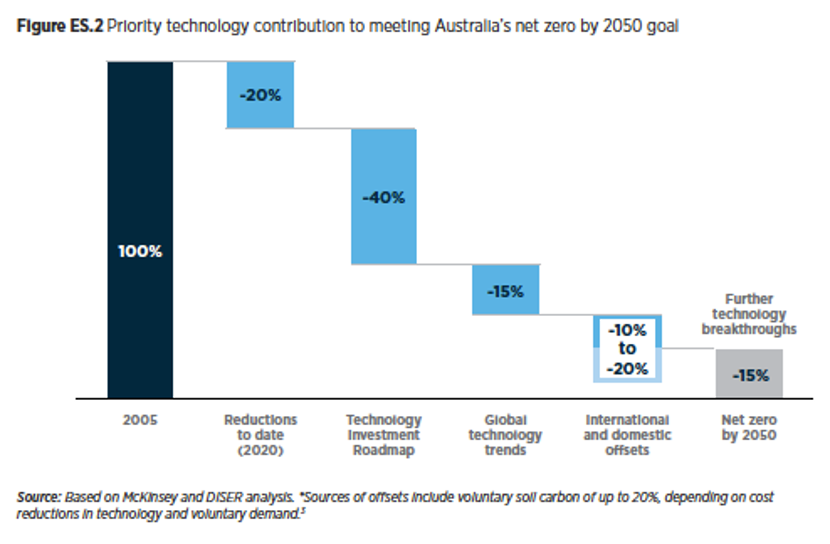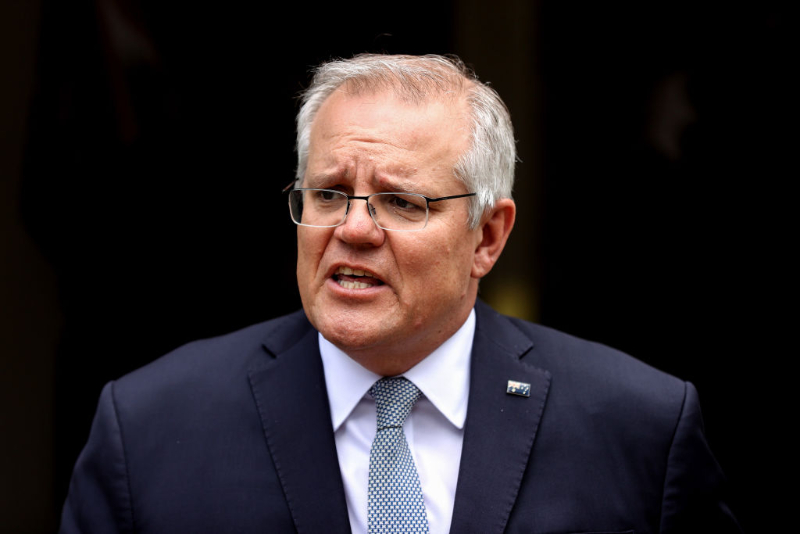Extract from Eureka Street
- Home
- Vol 31 No 21
- Scott Morrison’s climate PFFT
- Greg Foyster
- 27 October 2021
After an excruciating few weeks of negotiations with the Nationals — and far too many hours subjected to Barnaby Joyce’s ramblings — the Morrison government has finally announced their predictably underwhelming plan to reach net zero emissions by 2050.
Plan with a capital P, that is. Yesterday’s PowerPoint presentation from Energy Minister Angus Taylor consistently spelled the word with a capital letter, giving it proper noun status to confer an aura of substance that wasn’t there.
But rather than a climate Plan, it’s better described as a climate PFFT. That stands for Projections For Future Technologies because instead of using government policy to drive down emissions, the Coalition’s approach is to wait for a few hand-picked technologies to get cheaper and magically save the day.
PFFT also has the added benefit of accurately describing the response of energy experts who expected something more than this series of charts with very little detail, and no actual modeling because the Minister has claimed that’s not in the public interest.
And PFFT is what our international allies are likely to say when Scott Morrison rocks up to the Glasgow talks with no plan to increase Australia’s very low 2030 climate target, which has again been ranked dead last among developed nations.
One of the Fs in that acronym could also stand for Fantasy Technology. The plan (available here) assumes 15 per cent of pollution cuts will come from ‘global technology trends’, which aren’t specified. Another 15 per cent would come from ‘further technology breakthroughs’, which the report at least gives 72 words to explaining later on, but the only specific technologies mentioned are ‘bioenergy’ and ‘direct air’ forms of carbon capture and storage.
'The federal Coalition doesn’t approach the climate crisis like a government trying to solve a problem. They approach it like a political party in the frantic final weeks of an election campaign, beginning with slogans and then working backwards to produce charts and figures that can justify their sales pitch.'

(Above: Chart from Australia’s Long-Term Emissions Reduction Plan, page 15)
In other words, growing plants, burning them for energy and then storing the pollution underground, or sucking carbon dioxide from the air and storing that somewhere too.
To give this more credit than it deserves, relying on such unproven technology in climate scenarios is hardly unusual. Many models for keeping warming under 1.5 degrees assume large-scale use of bioenergy with carbon capture and storage (called BECCS in the literature). It’s seen as necessary because some sectors, such as agriculture and transport, will struggle to reduce emissions to zero by 2050. We’ll need some ‘negative emissions’ technologies to get there.
But in these models BECCS is Fantasy Tech in the service of a lofty and worthy goal — maintaining a habitable climate — whereas the federal government’s use of Fantasy Tech is simply to avoid imposing a price on pollution, or anything else that penalises the coal, oil and gas industries. (Let’s call that the Tony Abbot Principle, or TAP.)
Along with up to 30 per cent emissions cuts coming from technology that doesn’t exist, the Coalition’s net zero ‘Plan’ projects 10-20 per cent reductions from international or domestic offsets. Translation: paying for others to cut pollution because we won’t.
Another take is that two Fs in our PFFT acronym could stand for Fossil Fuels. Believe it or not, Energy Minister Angus Taylor actually used the announcement yesterday to spruik the LNG sector, even though booming gas exports are pushing up Australia’s emissions due to methane leakage (known as ‘fugitive emissions’).
Methane is the main component of natural gas and has a much greater warming effect than carbon dioxide over the short term. Scientists are worried that methane emissions have been accelerating, and a big focus of the upcoming climate talks in Glasgow will be a global pledge to cut methane emissions by 30 per cent by 2030. Australia’s continued promotion of the gas industry is undermining this international effort, which is likely to be a major focus of the talks.
You might think I’m being facetious, analysing the federal Coalition’s big climate Plan purely through the lens of a four-letter acronym, PFFT. But really, I’m just responding to the announcement at the same level it was created. If the government releases highly speculative projections with no modeling, why should we treat it as serious policy?
The reality is the federal Coalition doesn’t approach the climate crisis like a government trying to solve a problem. They approach it like a political party in the frantic final weeks of an election campaign, beginning with slogans and then working backwards to produce charts and figures that can justify their sales pitch.
After so many failed attempts at landing a climate policy, Liberal and National MPs just want to get out of this political hotspot and move on to discussing other topics.
So I’m assessing it the same way — at the level of marketing, of pure political poetry. Because that’s what it is: nice sounding words to avoid taking action in the next decade. It’s not a climate policy, it’s just PFFT... So let's call it what it is.

 Greg Foyster is a writer, illustrator and author of the memoir Changing Gears. His non-fiction and cartoons have appeared in The Age, The Saturday Paper, ABC, Meanjin, Eureka Street and others. His fiction has appeared in The Big Issue, Aurealis and Overland. He currently works in communications for an environment charity.
Greg Foyster is a writer, illustrator and author of the memoir Changing Gears. His non-fiction and cartoons have appeared in The Age, The Saturday Paper, ABC, Meanjin, Eureka Street and others. His fiction has appeared in The Big Issue, Aurealis and Overland. He currently works in communications for an environment charity.
No comments:
Post a Comment